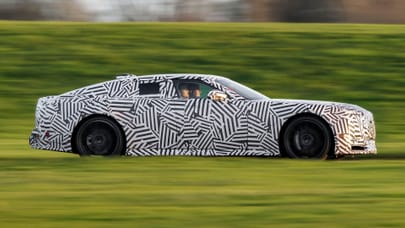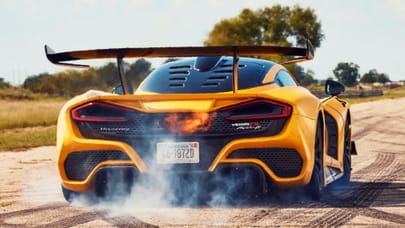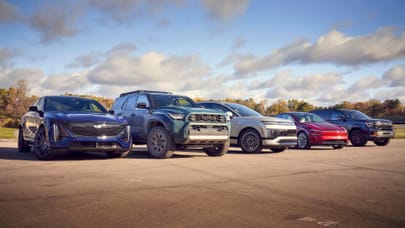
James and the Aston Martin DBS
The thing I used to like about Aston Martin was that they loomed large in the public conscience but not actually on the road.
Bond, obviously, had a lot to do with the former. Bond meant Astons were caddish and driven by chaps in well-cut suits packing a piece, which gave them a Savile-Row suavity absent from the offerings of Ferrari blah blah bloody blah. Aston Martin itself had a lot to do with the latter.
Up until the DB7, which was made abroad (ie in Bloxham, but that was the same thing as far as the old workforce was concerned), it was impossible to build Astons in any number. They were wrought from the earth with hammers by men in Newport Pagnell, which had been famous for several hundred years for building stage coaches.
The Aston factory was a fabulous experience for anyone interested in t'Victorian mill. It was a bit dark, a bit satanic, and a bit of a theme park. Men assembled whole engines by hand at a bench and then put their names on them. Other blokes then pushed completed engines across the main road on a trolley. The reception area and offices were a cronky old house with head-banging door lintels and wonky windows. Aston Martin was a cheerful great day out in history that just happened to produce a car now and then.
There was another reason for not seeing too many Astons before the late 1990s. With the best will in the world, they didn't always work that well, and it was generally accepted that the last few years of product development on any new model was a job for the customers. Legend has it that the first Lagonda didn't even make it down the road to Woburn Abbey, which is where all new Astons were officially photographed.
"Aston Martin was a cheerful great day out in history that just happened to produce a car now and then"
These days, though, Astons are built in a brand new, brightly lit modern factory (or ‘facility') at Gaydon, out of modern things and using modern methods, and it would be churlish of me to say that something, however, is now missing. Nobody really wants an Aston Martin to be outdated, temperamental and anachronistic.
Something, however, is missing.
I realised this as I drove off in the DBS. For a start, I was swerving through other Astons left right and centre, because every bugger's got one these days. I also couldn't shake off the impression that the DBS was somehow trying to be a bit of a Ferrari; that is, sophisticated, knowing and making an overt and readily understood performance statement. The Seventies Aston V8 was a singular car, a curious mix of bespoke British cottage industry methods and American muscle-car knuckle-headedness. You had to get it to want one.
Top Gear
Newsletter
Thank you for subscribing to our newsletter. Look out for your regular round-up of news, reviews and offers in your inbox.
Get all the latest news, reviews and exclusives, direct to your inbox.
So a big Aston is not as left-field as it once was, and neither is the DBS necessarily that great. It feels big and cumbersome where that Ferrari 612 felt surprisingly small, the interior lacks character, and that emotion control key thing is just bloody annoying. It does seem to be taking itself terribly seriously, which immediately demolishes any pretention of Britishness in my book. It looks good, if a little sentimental, but it somehow doesn't feel very special or, dare I say it, original.
But that may be a personal thing. I can't deny that it works extremely well as a supercar GT. The extra 40-odd bhp seem to make more difference than they should, and the DBS is at least like an old school big Aston in the way it thunders and brutalises the road. It feels like a car conceived by men who really wanted to build a locomotive.
Moreover, it doesn't feel anything like the DB9. The composites, the exotic metals, the ceramic brakes, all those tweaks and tucks - they've transformed the slightly tropid regular car into something much tougher and more plain-talking. This is quite Aston-like, too, and is a mirror of what happened when the original wishy washy V8 coupe was turned into the giant Doc Marten boot that was the V8 Vantage. ‘Bruiser' is the word that's usually employed here.
So I'm forced to return to the question that several other people have asked: why didn't they make the DB9 like this in the first place? Charging an extra £50,000 to get it right seems a bit rich to me, despite protestations that this is actually a completely different car.
It is, I'm afraid to say, another case of taste-the-difference-cheese. You're expected to believe that by paying more you are getting a better piece of cheddar, when really the regular cheddar is being downgraded and the proper stuff priced up. All cheese could be that good.
The real issue, though, is that I've come away wanting a pork pie.








